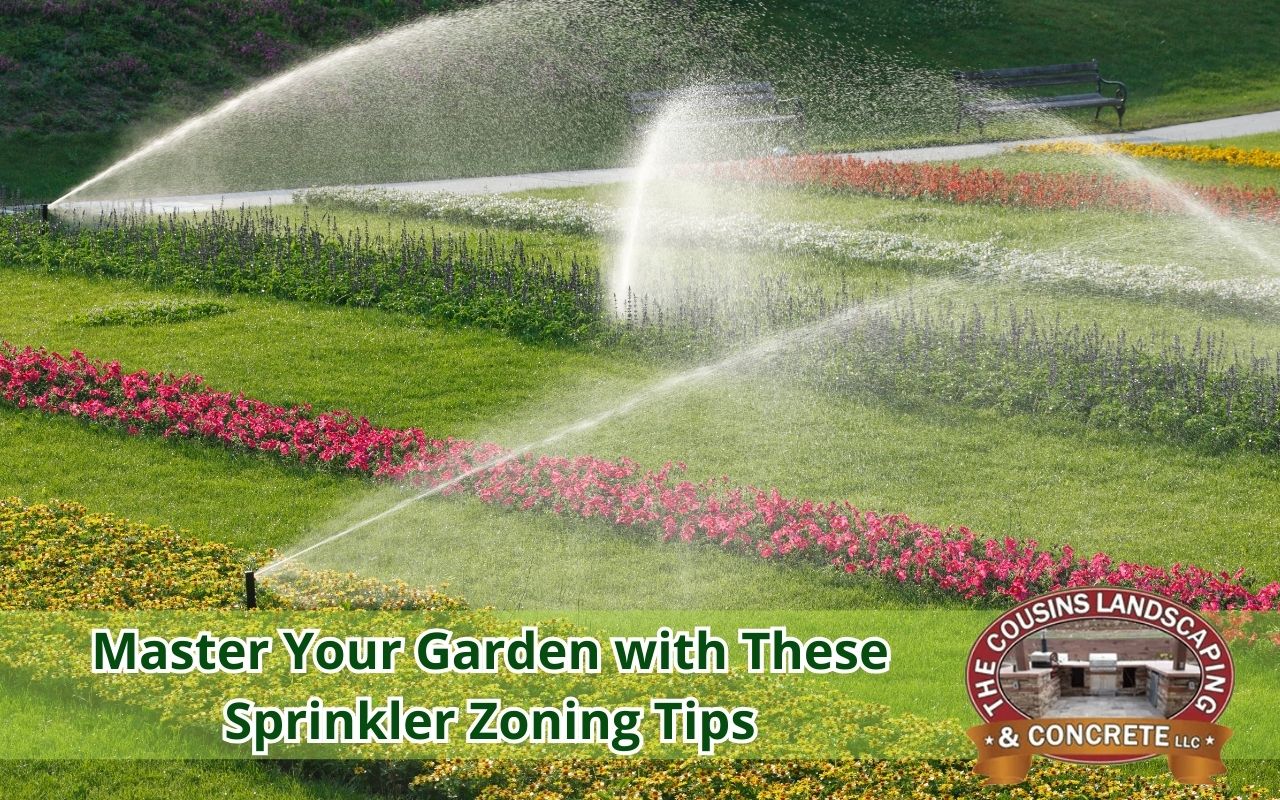
Creating a thriving garden may seem daunting, especially when water distribution varies across plants. Using practical sprinkler zoning tips transforms the process. With zoning, you deliver the right water to the right areas. By improving efficiency, you avoid waste and ensure healthier growth. Smart irrigation is the secret to a lush garden. Learn how to master the art of zoning for maximum benefits. For professional support, explore our services page.
Understanding the Basics of Sprinkler Zoning
Begin by identifying your garden’s water needs. Different plants require unique amounts of water depending on soil, exposure, and species. Creating separate zones based on these needs ensures precise coverage. Install zone valves and select appropriate sprinkler heads for each area. Program your controller carefully so every zone receives water at the right time. These foundational sprinkler zoning tips help prevent overwatering and keep your landscape vibrant. For expert installation, visit our main page.
Assessing Your Garden’s Water Needs
Map your garden to understand plant groups and their demands. Succulents thrive with deep, infrequent watering, while lawns need shallow, frequent irrigation. Evaluate environmental factors like soil type and slope. Sandy soil drains quickly, while clay retains moisture longer. Sloped areas may require shorter cycles to avoid runoff. Microclimates also matter; shaded areas differ from sunny spots. By applying sprinkler zoning tips, you can create efficient water distribution and balanced irrigation for all areas.
Designing Your Sprinkler Zones
Divide your garden into distinct segments such as lawn, flowerbeds, or vegetable areas. Grouping similar needs simplifies irrigation. Keep zones manageable to maintain proper pressure. Use clear labels when mapping zones to ensure easy adjustments later. Planning with these sprinkler zoning tips makes the system easier to maintain. It also ensures every area receives tailored care, reducing waste and improving efficiency.
Choosing the Right Sprinkler Heads for Each Zone
Sprinkler head choice depends on area size and plant types. Spray heads suit smaller, uniform spaces. Rotors provide wide coverage for large lawns. Drip systems or micro-sprays work best for delicate beds and shrubs. Always match precipitation rates across zones. Unequal heads may cause runoff or underwatering. Selecting the right head type ensures even water distribution and applies proven sprinkler zoning tips effectively.
Setting Up a Programmable Irrigation Controller
A controller automates watering and improves accuracy. Configure each zone individually with specific run times. Use weather-based features to pause irrigation during rain. Seasonal adjustments help conserve water while promoting plant health. Position your controller in a safe, sheltered area. With a smart system, watering becomes efficient, reliable, and consistent. Combining technology with sprinkler zoning tips results in healthier landscapes and reduced waste.
Regular Maintenance and Adjustment Tips
Inspect your sprinkler system monthly to prevent clogs and ensure alignment. Clean or replace nozzles when needed. Adjust schedules seasonally for hotter or cooler periods. Detect leaks early to avoid water waste and damage. Conduct catch-can testing to evaluate coverage and adjust run times accordingly. Maintenance keeps your irrigation system efficient and ensures continued benefits from your zoning efforts.
FAQ: Sprinkler Zoning Tips
Why is sprinkler zoning important? Zoning ensures plants receive water based on their individual needs, conserving water and improving health.
How often should I adjust my sprinkler zones? Seasonal adjustments are recommended to match changing weather and plant growth stages.
Can I install sprinkler zones myself? Yes, but professional help guarantees efficiency. Learn more through our contact page.
Do sprinkler zoning tips help save money? Yes, reducing wasted water lowers utility costs while keeping your garden healthy.
Troubleshooting Common Sprinkler Zone Issues
Uneven coverage may mean misaligned or clogged heads. Low pressure often indicates damaged pipes or closed valves. Short cycling can be fixed by adjusting run durations. Persistent leaks usually come from faulty valve seals. Applying sprinkler zoning tips in troubleshooting ensures long-term reliability. By addressing issues promptly, you prevent water waste and extend system life.
Mastering Your Garden’s Sprinkler Zoning
Sprinkler zoning elevates garden irrigation into a customized practice. From design to maintenance, each step ensures maximum efficiency. With consistent application of sprinkler zoning tips, your garden will flourish. Take the next step by exploring our contact page today. Trust our experts to help you build a greener, healthier, and water-efficient landscape.
